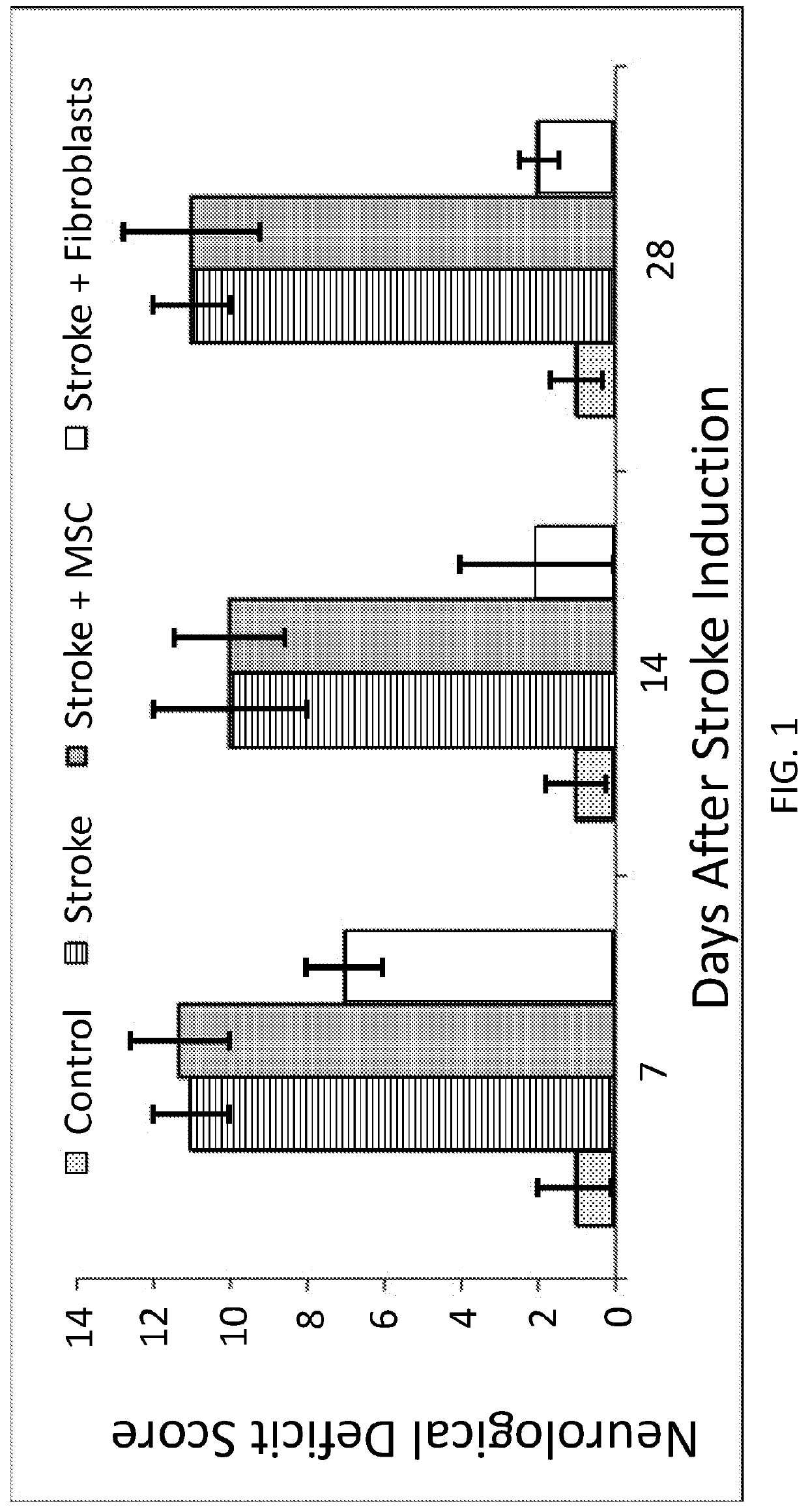Treatment of cerebral hypoxia including stroke, chronic traumatic encephalopathy, and traumatic brain injury
a cerebral hypoxia and chronic traumatic encephalopathy technology, applied in the field of cell biology, molecular biology, immunology, medicine, can solve the problems of less than 20% of patients receiving such treatment, worsening clinical outcomes, and long-term disability, and achieve the effect of increasing regenerative activity and induring regeneration in the brain of individuals
- Summary
- Abstract
- Description
- Claims
- Application Information
AI Technical Summary
Benefits of technology
Problems solved by technology
Method used
Image
Examples
example 1
Example 1
Fibroblasts are Superior to MSC at Decreasing Stroke-Induced
Neurological Deficits
[0078]For the studies, female Sprague-Dawley rats (Charles River Laboratories, Inc., Wilmington, Mass.) weighing 260-310 g were used. The animals in the experimental groups were allocated in a randomized fashion. Investigators were blinded to dose and treatment group allocation during surgery and during outcome evaluations. The animals underwent Reversible Middle cerebral artery occlusion (rMCAo) following an overnight fast. Anesthesia was induced with 3% isofluorane and 70% nitrous oxide. Rats were intubated endotracheally and ventilated mechanically on a mixture of 1-0.5% isofluorane, 70% nitrous oxide and a balance of oxygen. The right femoral artery and vein were catheterized to permit to monitor blood pressure and to take arterial samples for blood gas and glucose assessments. Arterial PCO2 and PO2 were maintained in the normal range by ventilator adjustment. For immobilization, rats recei...
PUM
| Property | Measurement | Unit |
|---|---|---|
| Pressure | aaaaa | aaaaa |
| Cell proliferation rate | aaaaa | aaaaa |
Abstract
Description
Claims
Application Information
 Login to View More
Login to View More - R&D
- Intellectual Property
- Life Sciences
- Materials
- Tech Scout
- Unparalleled Data Quality
- Higher Quality Content
- 60% Fewer Hallucinations
Browse by: Latest US Patents, China's latest patents, Technical Efficacy Thesaurus, Application Domain, Technology Topic, Popular Technical Reports.
© 2025 PatSnap. All rights reserved.Legal|Privacy policy|Modern Slavery Act Transparency Statement|Sitemap|About US| Contact US: help@patsnap.com

